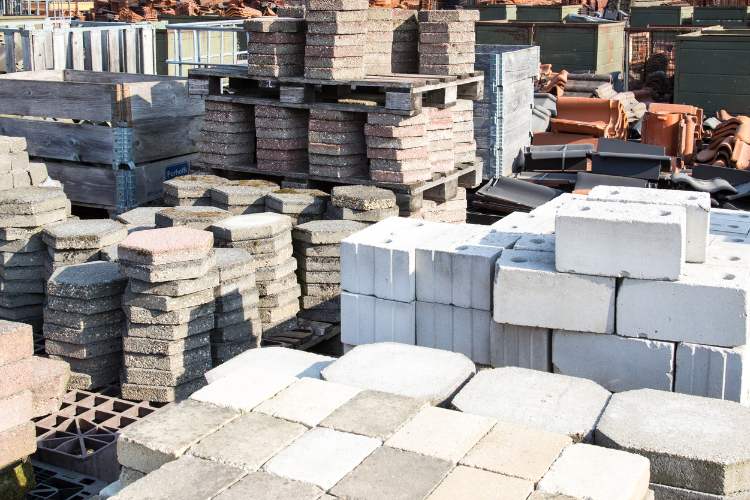There are many ways to manage the moving parts of a construction project: planning, design, and the actual build. Construction Manager at Risk (CMAR) takes a different approach than the typical design-bid-build method. As a general contractor, you should be well-versed in CMAR, so you can win business from project owners and build strong professional relationships that lead to more work in the future.
Table of Contents
What Is the CMAR Delivery Method?
Construction Manager at Risk (CMAR) is a delivery method in which the construction manager (CM) commits to delivering a project within a guaranteed maximum price (GMP), and not a penny more. This effectively limits how much the owner could end up paying for a project, and protects them from costs ballooning far beyond how much they expected to spend.
With this delivery method, the CM is involved in both the design and construction phases of the project. The project owner generally chooses the CM based on his or her qualifications before the design process is complete. The CM works with the architect to finalize and assess the design, and then the CM provides the GMP to the project owner. The CM then becomes the general contractor (GC) during the construction phase.
What is Guaranteed Maximum Price (GMP)?
A guaranteed maximum price (GMP) is the maximum price an owner is obligated to pay a general contractor for a particular project, regardless of the actual costs incurred. Under a CMAR contract, the GMP usually includes the contractor’s materials, labor, overhead, and other fees, which account for the contractor’s profit.
Aside from changes to the project design or scope, any cost overruns that exceed the GMP must be absorbed by the CM.
If the total cost of the project comes under the GMP, the owner simply keeps the savings. However, some project owners choose to share a portion of any leftover funds with the CM as an incentive to keep costs low.
What Is the Difference Between CMAR and Traditional General Contracting?
One of the main differences between these two delivery methods is the point at which the GC is involved. In traditional general contracting, the project owner completes the construction
documents before involving a GC. Once the documents are complete, GCs are able to review them and submit a bid for the project based on the provided plans. The project owner reviews multiple bids and selects a GC to award the project to.
In traditional contracting, the GC has no input during the design and planning phase, which means that he or she cannot perform any reviews or preconstruction services. With CMAR, the CM or GC is involved much earlier and is able to provide input regarding estimates and other potential issues.
In addition, when using the CMAR delivery method, the project owner uses a two-step selection process to choose a CM, rather than a call for bids. The process includes a request for qualifications and a request for proposals. Then, the owner selects the CM he or she believes will provide the best value — financially and in regard to technical expertise.
What Are the Benefits of the CMAR Method?
1. Contractor Expertise
When using the CMAR method, the project owner gets to benefit from the GC’s perspective early in the planning process. This allows the contractor to provide input and insight regarding design decisions and costs.
2. Increased Cost Control
Because the CM is involved throughout the design process and can provide insight into cost estimates, CMAR generally offers a higher level of cost control than the traditional design-build method. Because CMAR involves a GMP, project owners also enjoy financial certainty, knowing that the project will not exceed a set price.
3. Higher Quality Work
Because the GMP is predetermined before construction begins, the CM/GC has more flexibility in selecting subcontractors and does not have to simply select the lowest bid. This generally leads to higher quality work with fewer claims.
4. Streamlined Communication
With CMAR, the CM works as an agent for the project owner and is heavily involved in the decision-making process prior to construction, as well as the construction phase itself. This allows the CM to bridge the gap between the design and construction phases. Every party involved looks to the CM as the point of contact, which streamlines communication between the owner, architect, and subcontractors.
5. Fewer Payment Issues and Delays
Because the CM acts as the primary contact for all subcontractors and other parties involved in the construction process, payments often get approved faster for a CMAR project than for other delivery models. And because the CM and project owner have already agreed on the GMP, there tend to be fewer concerns and disagreements around acceptable payments — ultimately leading to fewer payment delays and issues.
What Are the Disadvantages of the CMAR Method?
1. Increased Risk for GC
For the CM, the CMAR method comes with a significant disadvantage: It shifts the risk away from the project owner and to the party performing the work. While the project owner can be confident in the maximum price he or she will have to pay, the CM still faces the risk of cost overruns eating up profit.
2. Higher Pressure on the GC
The CMAR method also puts a higher level of pressure on the CM. Because the CM is considered the primary point of contact for the project, if the CM is inexperienced or unsure, he or she can become the source of delays and concerns for both the design and construction phases. This can lead to payment delays and low-quality work.
The CMAR delivery method can offer advantages to both project owners and construction managers, as long as the CM is capable and confident in his or her abilities. An experienced CM has the potential to facilitate a high-quality project with streamlined communication and few payment delays.











